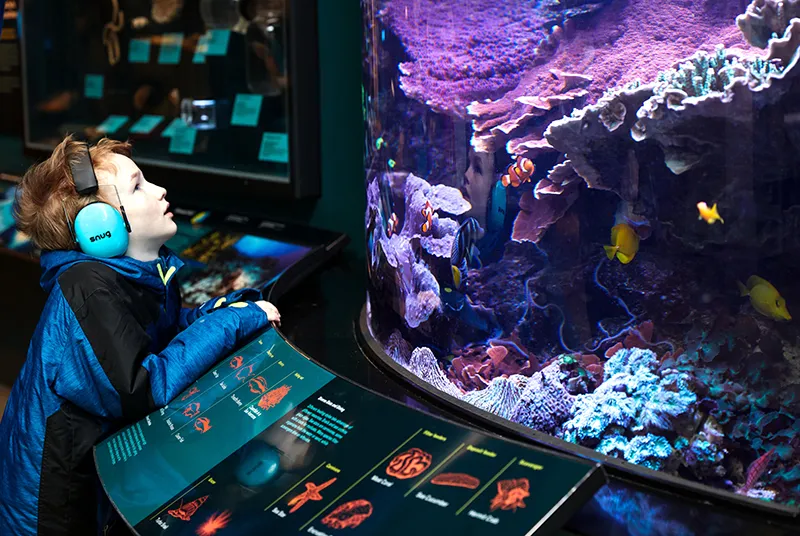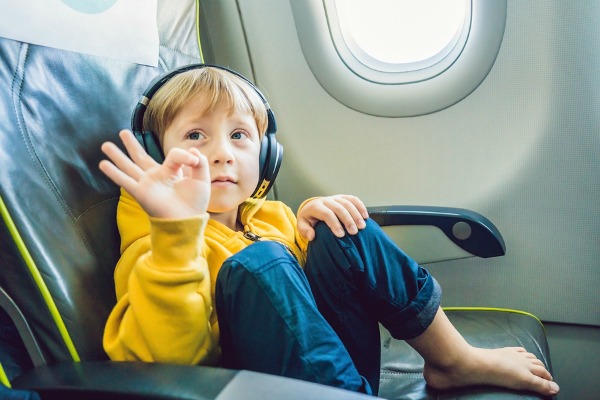Museum and attraction outings can be a rich experience for people of all ages and backgrounds. But for those with sensory sensitivities those on the autism spectrum, with sensory processing disorder, PTSD, or anxiety typical museum environments can at times be overwhelming. Blinding lights, din of sounds, crowded spaces, and unpredictable stimuli can be distressing or stressful.
To offer an even more welcoming and inclusive environment, many museums and attractions have implemented Sensory Friendly Hours or Sensory Friendly Days. These special visitation hours are established to accommodate visitors who can benefit from calmer, less noisy, and more predictable environments.
What Are Sensory Friendly Hours?
Sensory Friendly Hours are special times when museums and attractions modify their usual environment to reduce sensory overload. Modifications typically include:
- Decreasing the volume of audio or background music.
- Decreasing lights or light levels to reduce brightness or flashing lights.
- Controlling crowd size or reserving these times for smaller groups.
- Marking quiet spaces or sensory rooms where visitors can take a break.
- Supplying sensory kits with noise-canceling headphones, fidget items, or weighted lap pads.
- Trained staff to assist visitors who have sensory needs.
- Utilizing visual aids like social stories or maps to plan visitors’ visits.
These facilities allow for a room where all individuals, especially neurodivergent visitors and families with sensory-sensitive children, can have access to cultural, educational, and recreational activities without discomfort.
Why Sensory Friendly Hours Matter
- Inclusion: Sensory friendly activities help break down barriers to cultural experience so that museums and attractions are welcoming for everyone who visits.
- Comfort and Safety: Sensory friendly hours allow visitors to experience exhibits at their own comfort level without overwhelming or putting themselves in danger.
- Family-Friendly: Schedule visits without anxiety concerning meltdowns or stress for parents and caregivers of children with sensory sensitivities.
- Community Awareness: The museums hence demonstrate awareness and support towards the sensory-sensitive and neurodiverse communities by offering these hours.
Some Examples of Museums and Attractions with Sensory Friendly Hours
- The Smithsonian Institution, Washington, D.C., USA: The Smithsonian has Sensory Friendly Sundays at some of its museums, including the National Air and Space Museum. The museum works to lower sound levels and dim lights. It also offers sensory kits. Staffers are trained to help visitors with their sensory needs.
- Children’s Museum of Indianapolis, USA: Reknown for its open policy, this museum has Sensory Friendly Sundays when lights and noise are minimized. They have sensory backpacks and quiet spaces so that families can access exhibits without sensory overload.
- The Natural History Museum, London, UK: This museum has Autism-friendly mornings before the museum is open to the public, minimizing noise and crowds. Visual guides and quiet spaces are provided to assist visitors with sensory sensitivities.
- San Diego Zoo, California, USA: The zoo provides Sensory Friendly Days a few times annually, during which loudspeaker announcements are minimized and calming stations are established. Sensory backpacks and maps identify quiet paths.
- Perot Museum of Nature and Science, Dallas, Texas, USA: They hold Sensory Friendly Nights, with reduced sound and light and sensory-friendly events designed for kids on the spectrum. Sensory kits can be obtained at the entrance.
How to Prepare for a Sensory Friendly Visit
- Check the website of the museum: Scour for their sensory friendly hours or events and any special accommodations they make.
- Book your tickets in advance: Some venues require advance booking or sign-up for certain sensory friendly hours.
- Download some visual supports: Social stories, maps, or videos of your visit are downloadable in advanced preparation for your visit.
- Bring your sensory tools with you: If available, bring your own noise-canceling headphones, fidget toys, or comfort items with you.
- Communicate needs: Don’t hesitate to inform staff of any special accommodations you might need.
The Future of Sensory Friendly Museums and Attractions
With increasing awareness of neurodiversity and sensory processing differences, more museums and attractions are adopting sensory friendly initiatives. Technology is also playing a role, with apps and virtual tours offering sensory-friendly experiences from home. Accessibility is no longer an afterthought but an expanding priority, making sure that cultural enrichment is indeed for all.
Sensory friendly hours are a crucial step toward inclusive cultural spaces welcoming guests with varying sensory needs. By modifying environments, offering assistance, and promoting awareness, museums and attractions have the ability to provide unforgettable experiences for all, no matter the level of sensory sensitivity.
If you’re planning a visit, seek out sensory friendly programs and enjoy the wonders of art, history, science, and nature in a way that feels just right for you.





Leave a Comment